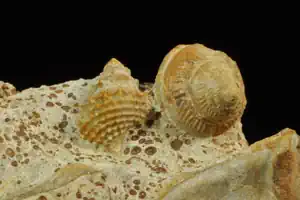A story of Gastropods Fossils
Gastropods are a mollusc type, meaning they’re part of the phylum Mollusca. They are characterized by having a single shell and an internal body cavity called a mantle, which usually has gills attached. They also have tentacles at the ends of their bodies, which they use to grab food and move around.
The Gastropods are divided into three classes: Prosobranchia, Opisthobranchia, and Pulmonata. The Prosobranchia includes snails and clams; the Opisthobranchia includes slugs; Pulmonata includes land snails and sea snails like whelks.
The first gastropod fossils were discovered in 1821 by Christian Gottfried Ehrenberg while he was examining rock formations near Gottingen, Germany (Burch & Pabst, 2005). Since then, many other discoveries have been made by scientists around the world, including those who specialize in paleontology which is the study of fossilized organisms.
Gastropod fossils date back as far as 570 million years ago! The earliest known fossil gastropod is called Prototroctenella. It was found in New York State and dates back over 500 million years ago! Prototroctenella had a shell with two whorls that were covered in spines.
Some gastropods live in deep-sea environments like hydrothermal vents with little light but plenty of heat from vents on the seafloor (called “black smokers”). There are even some species that live on land.
Gastropods are a class of molluscs that include snails and slugs. They have been found in many fossilized forms, dating back to the Cambrian period (545-490 million years ago). Gastropods are important for palaeoclimatic studies because they can determine water temperatures.
Gastropods are a significant group of sea snails found in palaeoclimatic studies. They are known to be the most diverse marine invertebrates, with more than 50,000 species described worldwide (Burch & Pabst, 2005). The survey of gastropods fossils has provided valuable information about past climate change, including sea level rise and temperature fluctuations (Abrantes et al., 2002).
The shells of gastropods have multiple layers that grow at different rates. The outermost layer is made up of carbonate, which forms in colder waters. It takes longer for these shells to start than those that contain more magnesium or iron. This means that there will be a more significant number of layers in gastropod fossils found in colder waters than in warmer areas.
It is believed that gastropod fossils are usually found in shallow waters because they live on the seafloor and burrow into it. However, some cases have been found on land or deep in the ocean (Burch & Pabst, 2005). These fossils have been found worldwide from sediment layers formed during different periods, such as Cretaceous through Tertiary (Abrantes et al., 2002).
Besides determining the water temperature when these animals lived, scientists can also learn about past climate by examining their microfossils (smaller fossils). If these microfossils come from plants or other organisms which require sunlight, they indicate a drier climate; if they come from algae or bacteria which prefer shade, they indicate a wetter one.


